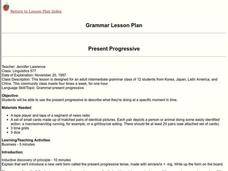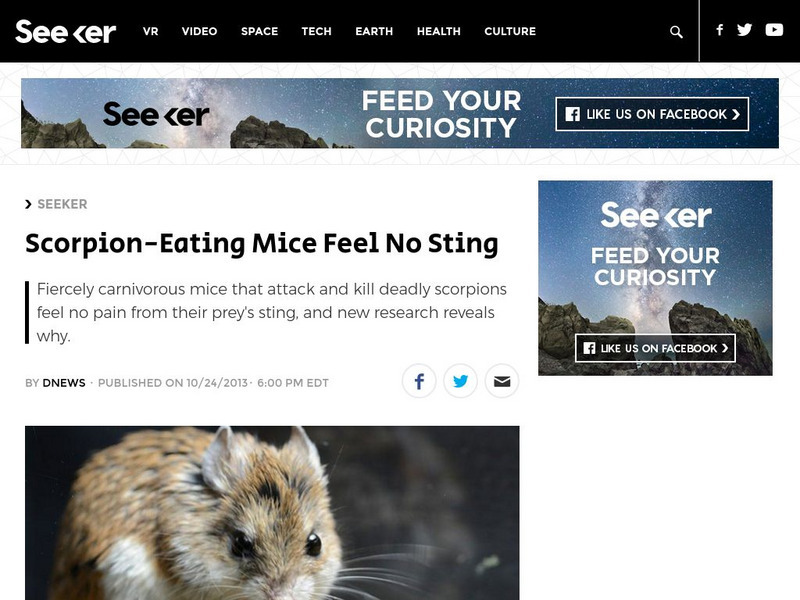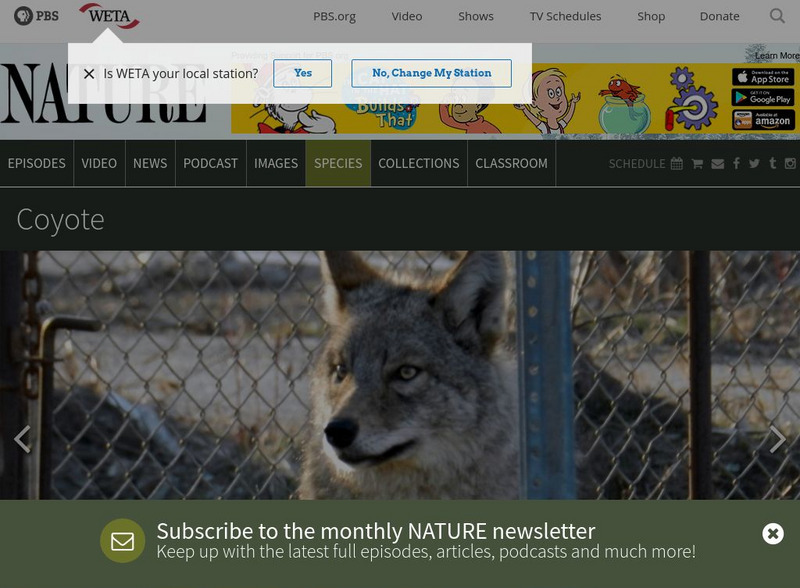Curated OER
Wild Lion Vets
Students research and explore the "king of the beasts" then make their own field guide of cats by doing research on each one and including information such as appearance, habitat, range, and food.
Curated OER
Present Progressive
Students use the present progressive to describe what they're doing at a specific moment in time.
Curated OER
Oceans All Over
Young scholars identify the locations and names of the world's oceans. They draw and label a round piece of fruit and answer discussion questions.
Curated OER
Investigating Animals in Water
Students observe small animal activity. They identify local water animals and describe the habitats where water animals can be found. Students collect samples to observe in the classroom.
Curated OER
Creatures That Glow In The Night
Young scholars investigate the different bioluminescent organisms. They use microscopes in order to make observations and draw what is seen. Students demonstrate they have studies the differences between the process of photosynthesis and...
Curated OER
Barn Owl
In this barn owl worksheet, students read four paragraphs of information about barn owls, and study a photograph. There are no questions here.
Curated OER
Vocabulary Practice: Fill in the Blanks
In this vocabulary worksheet, students correctly complete sentences, filling in blanks with words from a word pool at the top of the worksheet, 12 sentences total.
Seeker
Seeker: Week of 10 28 13: Scorpion Eating Mice Feel No Sting
Article reports on the scientific discovery that the venom of a scorpion has an unusual reaction in grasshopper mice, actually blocking the mouse from feeling pain instead of inducing it.
Concord Consortium
Concord Consortium: Stem Resources: Variations and Adaptations
Experiment with variations in grass to see which size grows best with different amounts of water. Understand that grass that can live in different levels and change to its environment has a better chance of surviving. Also, experiment...
PBS
Pbs Learning Media: Bird Food and Bird Beaks
There are almost as many types of bird beaks as there are types of food that birds like to eat. This collection of images shows a wide range of beaks and the types of foods handled by each.
The Association of the British Pharmaceutical Industry
Active Science: Humans and Animals: Food [Pdf]
An interactive online game to explore what animals eat.
Smithsonian Institution
National Museum of Natural History: Where Do Mammals Live?: Wildebeest
Brief illustrated overview of the wildebeest and an accompanying video demonstrate the physical adaptations that allow this animal to eat and digest tough African grasses.
Lincoln Park Zoo
Lincoln Park Zoo: Grevy's Zebra
Learn the difference found in this species of zebra, where it is found in the wild, how it has adapted to its niche environment, what it eats, and its reproduction habits.
Lincoln Park Zoo
Lincoln Park Zoo: Western Lowland Gorilla
Use this site for information on the Western Lowland Gorilla. The information consists of special adaptations the gorilla has had to make, what it looks like, where it is found in the wild, what it likes to eats, and what its...
PBS
Pbs Nature: Coyote
What do you know about coyotes? Learn more about how adaptable this animal is to new surroundings when you check out this informative resource. Explore this website to find more facts and information ranging from what these animals eat...
Smithsonian Institution
National Museum of Natural History: Hall of Mammals: Leopard Seal
Brief overview of the leopard seal and an accompanying photo demonstrate the physical adaptations that allow this animal to eat meat.
Smithsonian Institution
National Museum of Natural History: Hall of Mammals: Pygmy Marmoset
A brief overview of the pygmy marmoset and accompanying photos demonstrate the physical adaptations that allow this animal to eat.
Smithsonian Institution
National Museum of Natural History: Hall of Mammals: Crabeater Seal
Brief overview of the crabeater seal and accompanying photos demonstrate the physical adaptations that allow this animal to eat and survive.
Smithsonian Institution
National Museum of Natural History: Hall of Mammals: Giant Panda
Brief illustrated overview of the giant panda and an accompanying video demonstrate the physical adaptations that allow this animal to eat and why it has become an endangered species.
Smithsonian Institution
National Museum of Natural History: Hall of Mammals: Red Panda
Brief overview of the red panda and accompanying photos demonstrate the physical adaptations that allow this animal to eat and survive in its habitat.
Smithsonian Institution
National Museum of Natural History: Hall of Mammals: Black Bear
Brief overview of the black bear and accompanying photos demonstrate the physical adaptations that allow this animal to eat and survive in their habitat.
Smithsonian Institution
National Museum of Natural History: Hall of Mammals: Beaver
A brief overview of the beaver and accompanying photos demonstrate the physical adaptations that allow this animal to eat and live in its habitat.
Smithsonian Institution
National Museum of Natural History: Hall of Mammals: Vampire Bat
Brief overview of the vampire bat and an accompanying photo demonstrate the physical adaptations that allow this animal to eat to survive.
Smithsonian Institution
National Museum of Natural History: Hall of Mammals: Sika
Brief illustrated overview of the sika deer and an accompanying video demonstrate the physical adaptations that allow this animal to eat and use its voice to attract females.











